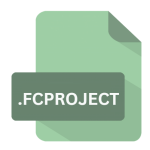.AEPX File Extension

After Effects XML Project
| Developer | Adobe Systems |
| Popularity | |
| Category | Video Files |
| Format | .AEPX |
| Cross Platform | Update Soon |
What is an AEPX file?
The .AEPX file extension represents an XML-based project file format used by Adobe After Effects, a popular software application for video post-production and motion graphics.
This format allows users to save and share complex animations, visual effects, and compositions in a standardized XML format, which facilitates compatibility with various tools and systems.
Understanding the .AEPX file format is essential for users who work extensively with After Effects and need to manage, convert, or open project files across different environments.
More Information.
The development of the .AEPX file format was part of Adobe’s broader effort to improve workflow efficiency and collaboration among users.
The binary .AEP files were often criticized for their lack of transparency and difficulty in parsing by external tools. The .AEPX format addressed these issues by adopting XML, which is both machine-readable and editable.
This made it easier for users to troubleshoot issues within their projects and integrate After Effects projects with other software tools.
The initial purpose of the .AEPX file format was to streamline the process of sharing and collaborating on After Effects projects.
By using XML, After Effects users could export their project files in a format that was easier to inspect, modify, and manipulate outside of the After Effects environment.
This flexibility was especially valuable for teams working in distributed environments or integrating After Effects projects into larger workflows involving other software applications.
Origin Of This File.
The .AEPX file format emerged with the introduction of Adobe After Effects CC 2014. Prior to this, After Effects used the .AEP (After Effects Project) format, which was binary-based.
Adobe’s decision to introduce the .AEPX format aimed to enhance interoperability and provide a more accessible way to exchange project files.
XML (eXtensible Markup Language) was chosen as the underlying structure due to its human-readable nature and its ability to facilitate data sharing between different software applications.
File Structure Technical Specification.
The .AEPX file is essentially a compressed ZIP archive containing several XML files and other assets related to the After Effects project. The structure of the .AEPX file includes:
- Project XML File: This is the core of the .AEPX file, detailing the composition, layers, effects, and other elements within the project. It contains metadata about the project and serves as the main reference for the After Effects application when loading the project.
- Media Files: If the project includes media assets (e.g., video files, images), these are stored within the ZIP archive in separate folders. These files are referenced by the XML but are not contained within the XML itself.
- Effects and Presets: The .AEPX format allows for the inclusion of custom effects and presets used within the project. These are stored as separate XML files or binary data within the ZIP archive.
- Compositions and Layers: Each composition and its associated layers are detailed in the XML, including properties such as transformations, keyframes, and effects applied to layers.
- Other Metadata: The .AEPX file includes various metadata about the project, such as version information, project settings, and user preferences.
The technical specification of the .AEPX format ensures that project files can be edited with any text editor or XML parser, providing greater transparency and control over the content of the project.
How to Convert the File?
Converting .AEPX files typically involves exporting or saving them in a different format compatible with the target application or environment. Here’s how you can handle conversions:
- Converting to .AEP: Within After Effects, you can save a project as a .AEP file by simply using the “Save As” option. This will create a binary .AEP file from your .AEPX project.
- XML Transformation: If you need to convert .AEPX to another XML-based format, you can use XML transformation tools or write custom scripts to map the .AEPX XML structure to the desired format.
- Importing to Other Applications: To use .AEPX files in other software, you may need to export assets and compositions individually or use specialized conversion tools if available.
Advantages And Disadvantages.
Advantages:
- Interoperability: The XML format allows for better integration with other software tools and systems, facilitating data exchange and project management.
- Transparency: Users can inspect and modify the content of the project file using text editors or XML tools, which helps in troubleshooting and customizing project details.
- Collaboration: The .AEPX format enhances collaboration by making it easier to share project files with other team members or integrate them into larger workflows.
- Version Control: XML-based files are easier to manage with version control systems, enabling teams to track changes and maintain project histories more effectively.
Disadvantages:
- File Size: While XML files are human-readable, they can become large and unwieldy, especially for complex projects with numerous assets and effects.
- Compatibility: Some older versions of After Effects may not support .AEPX files, potentially causing compatibility issues for users working with legacy systems.
- Complexity: The XML structure can be complex, making manual editing or troubleshooting challenging for users unfamiliar with XML syntax.
- Performance: Large XML files may impact performance when loading or saving projects, especially on systems with limited resources.
How to Open AEPX?
Open In Windows
- On Windows, you can open .AEPX files using Adobe After Effects CC 2014 or later. Simply use the “File > Open” menu option in After Effects to load the .AEPX file. You can also use file extraction tools like WinRAR or 7-Zip to access the contents of the ZIP archive if needed.
Open In Linux
- While Adobe After Effects is not natively available on Linux, you can still extract .AEPX files using tools like unzip or p7zip. To work with the project data, you would need to use compatible software or consider running After Effects through a compatibility layer or virtual machine.
Open In MAC
- On macOS, the process is similar. Open Adobe After Effects CC 2014 or later and use the “File > Open” option to access .AEPX files. For extracting contents, you can use built-in tools like Archive Utility or third-party applications like The Unarchiver.












